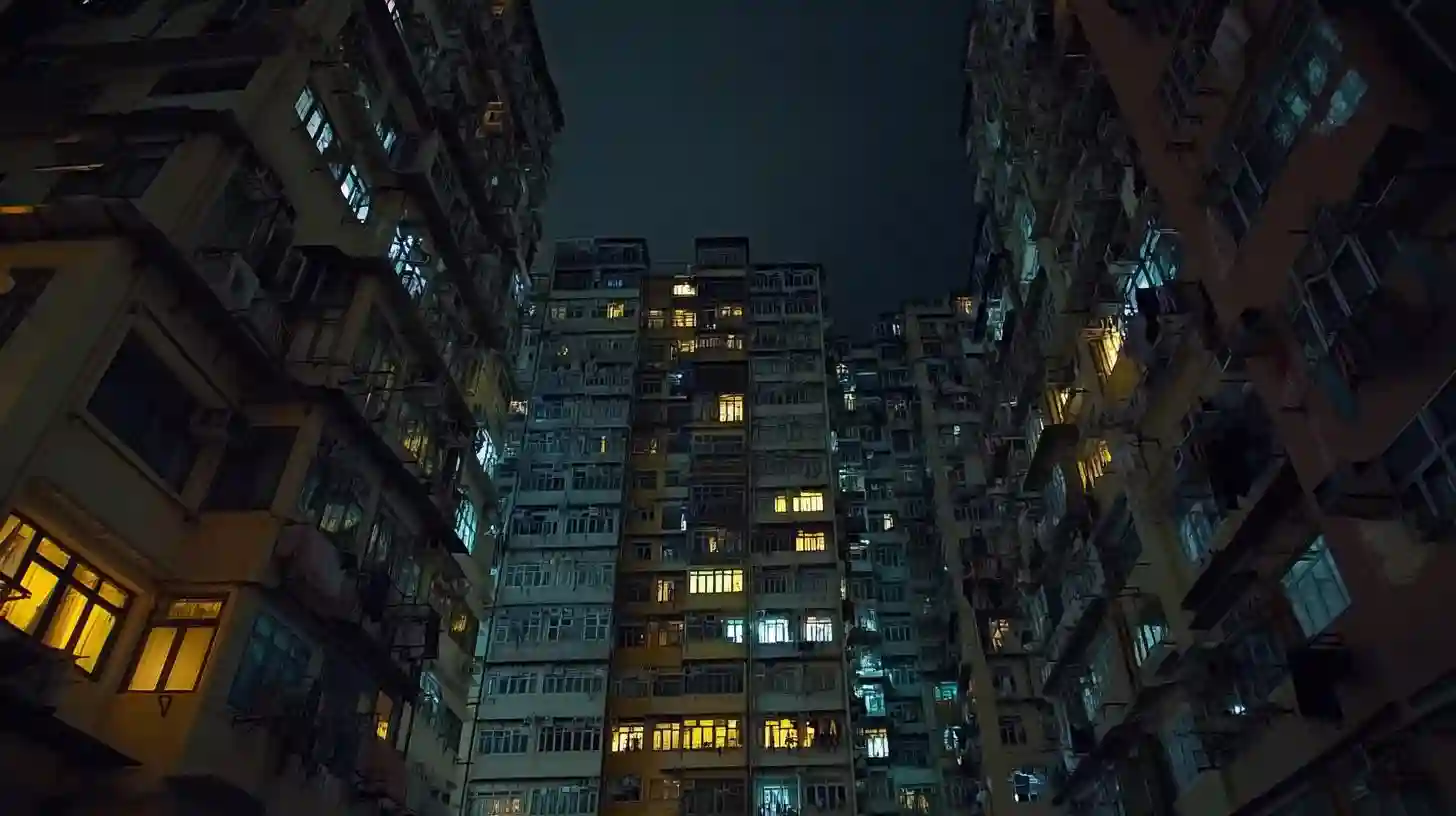
In the vibrant city of Hong Kong, where the skyline is a dramatic mix of modern skyscrapers and historic architecture, the transformation of old buildings into movie scenes by night is a fascinating phenomenon. These architectural relics, which often serve as mere backdrops during the day, morph into dynamic settings for film and television once the sun sets. This nightly transformation is more than just a visual spectacle; it reflects a deep cultural engagement with both the past and present of the city.
The old buildings of Hong Kong, with their eclectic mix of colonial and traditional Chinese styles, offer an alluring contrast to the city’s contemporary environment. Structures that once housed bustling markets, schools, or government offices now become the canvas for filmmakers seeking to capture the essence of a bygone era or to create an atmospheric backdrop for dramatic scenes. The nocturnal makeover of these buildings is not merely a product of cinematic imagination but also a testament to Hong Kong's rich history and its ongoing relationship with film.
Take, for instance, the historic areas such as Central and Sheung Wan. These neighborhoods are home to a plethora of pre-war buildings with charming facades and intricate details that make them ideal for cinematic representation. As night falls, the lighting design can dramatically alter the appearance of these buildings, casting shadows and highlighting architectural features that would otherwise be overlooked. The interplay of light and shadow creates a sense of mystery and intrigue, transforming the buildings into places that seem frozen in time or caught between reality and fiction.
In some films, these old buildings are utilized to evoke a sense of nostalgia or to set the stage for historical narratives. The buildings themselves, often centuries old, hold stories of their own, which filmmakers can harness to enhance their storytelling. By incorporating these historic structures into their films, directors can tap into the emotional weight of the past, allowing viewers to connect with the characters and stories on a deeper level. This use of old buildings serves not just as a backdrop but as a character in its own right, contributing to the overall atmosphere and mood of the film.
Moreover, the preservation of these buildings as filming locations helps to maintain their relevance in a rapidly changing cityscape. As modern development continues to reshape Hong Kong, there is a growing awareness of the need to preserve the historical and cultural significance of these structures. By featuring these buildings in films, there is a renewed appreciation for their architectural beauty and historical importance. This cinematic spotlight brings them into the public eye, often inspiring both locals and tourists to explore and appreciate the rich heritage embedded within these walls.
The transformation of old buildings into movie scenes also reflects the broader trend of urban environments being used creatively in filmmaking. Cities around the world are increasingly seen not just as settings but as integral elements of a film’s narrative. Hong Kong’s old buildings offer a unique character that is distinct from the more homogeneous modern landscapes. They provide filmmakers with a tangible connection to the city's past, which can be visually and thematically compelling. This fusion of past and present creates a dynamic interplay that enriches the cinematic experience.
Additionally, the transformation of these buildings is not only about aesthetic appeal but also about the practicalities of filmmaking. The physical space provided by these older structures can be advantageous for certain types of scenes. The layout and design of these buildings may offer unique opportunities for staging and filming that modern structures might not provide. This practical aspect complements the artistic reasons for choosing old buildings as film locations, making them highly sought after by directors and producers.
As night turns the city into a canvas of possibilities, the old buildings of Hong Kong take on new roles. The lighting, camera angles, and creative direction work together to reshape their appearance, often making them appear timeless or otherworldly. The streets and alleys that might otherwise be overlooked become integral to the storytelling, contributing to the film’s atmosphere and narrative depth. In this way, the transformation is not just physical but also conceptual, as these spaces are imbued with new meanings and significance through their depiction in film.
The engagement between film and architecture in Hong Kong highlights the city’s unique position as a crossroads of cultures and eras. The old buildings that become movie scenes by night serve as a bridge between Hong Kong’s colonial past and its vibrant present. They offer a glimpse into the city’s evolution, reflecting its capacity to honor its heritage while embracing contemporary artistic expression. This interplay between old and new enriches both the cinematic world and the city itself, creating a dynamic and multifaceted cultural landscape.
In essence, the nocturnal transformation of old buildings into movie scenes in Hong Kong is a testament to the city's rich historical tapestry and its ongoing dialogue with the cinematic arts. These buildings, steeped in history and character, are reimagined through the lens of film, revealing new dimensions and stories that might otherwise remain hidden. Through this process, Hong Kong’s architectural heritage is both preserved and celebrated, contributing to the city’s identity as a place where the past and present coalesce in creative and visually compelling ways.